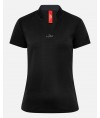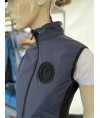New products
New products
Muscles, Tendons & Joints
Horse’s joints, tendons, ligaments and muscles are subjected to considerable stresses as they work, whether they are elite performance horses, or leisure horses hacking in the countryside, and signs of joint discomfort may be more noticeable in older horses and ponies.
Cartilage and joint fluid are often the first areas of the joint to show signs of wear and tear – cartilage is the spongy, elastic material which covers the ends of bones within a joint and acts as a major shock absorber. Joint fluid should be thick and viscous, to bathe and lubricate the joint, also acting as a vital shock absorber.
During exercise, especially intense training and competition, and as horses age, cartilage can become damaged, and joint fluid become thinner, resulting in discomfort and loss of performance.
It's important that your horse has healthy muscles. this is a key part of training and fittening programme. Strong, healthy muscles are required to support the rider, to perform athletic tasks, and to support joints, tendons and ligaments. Muscles are composed mainly of protein, and protein itself is made from building blocks or amino acids. Scientific research has shown that certain key amino acids are key to muscle development and include lysine and leucine. Research has also shown that hard-working horses not only need these important amino acids to build muscle but also for optimum recovery and repair after exercise.
Tired, sore muscles will benefit from plant-based compounds including Boswellia, to support recovery and a normal inflammatory response.
Muscles, Tendons & Joints
Op dit moment hebben we geen aanbiedingen voor dit merk. Bekijk hier onze alternatieven.
Horse’s joints, tendons, ligaments and muscles are subjected to considerable stresses as they work, whether they are elite performance horses, or leisure horses hacking in the countryside, and signs of joint discomfort may be more noticeable in older horses and ponies.
Cartilage and joint fluid are often the first areas of the joint to show signs of wear and tear – cartilage is the spongy, elastic material which covers the ends of bones within a joint and acts as a major shock absorber. Joint fluid should be thick and viscous, to bathe and lubricate the joint, also acting as a vital shock absorber.
During exercise, especially intense training and competition, and as horses age, cartilage can become damaged, and joint fluid become thinner, resulting in discomfort and loss of performance.
It's important that your horse has healthy muscles. this is a key part of training and fittening programme. Strong, healthy muscles are required to support the rider, to perform athletic tasks, and to support joints, tendons and ligaments. Muscles are composed mainly of protein, and protein itself is made from building blocks or amino acids. Scientific research has shown that certain key amino acids are key to muscle development and include lysine and leucine. Research has also shown that hard-working horses not only need these important amino acids to build muscle but also for optimum recovery and repair after exercise.
Tired, sore muscles will benefit from plant-based compounds including Boswellia, to support recovery and a normal inflammatory response.


